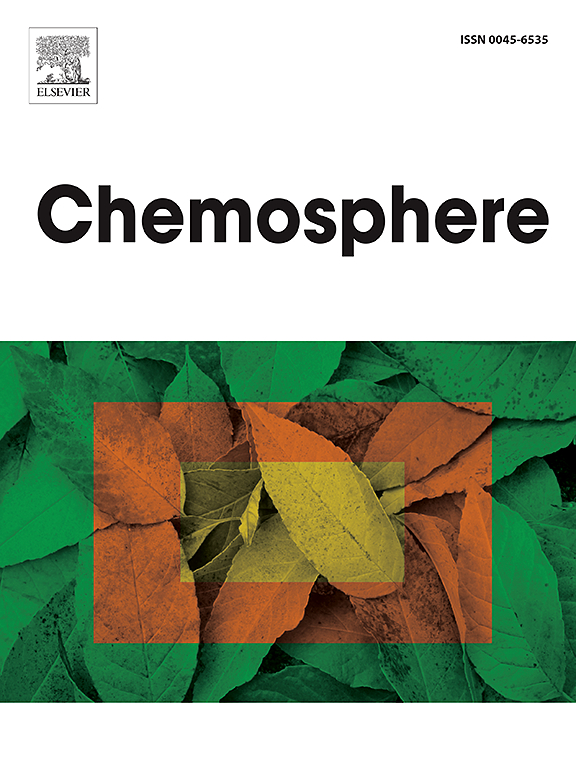Ecotoxicological efficiency of Cr(VI) removal treatment with reductive biogenic iron-based material determined by amphibian larval bioassays
IF 8.1
2区 环境科学与生态学
Q1 ENVIRONMENTAL SCIENCES
引用次数: 0
Abstract
Due to the toxic effects of chromium, its high environmental persistence, and potential for bioaccumulation, it is imperative to develop sustainable strategies for managing its contamination. In the present study, the synthesis time of supported biogenic iron-based microparticles (BioFe-MMT) and their performance in the Cr(VI) removal process were analyzed. Its lethal and sublethal ecotoxicological effects were subsequently evaluated through standardized bioassays using amphibian Rhinella arenarum larvae exposed to BioFe-MMT and Cr(VI) before and after the removal treatment. Results demonstrated that BioFe-MMT biosynthesized for 3 weeks had smaller particle size and better Cr(VI) and total Cr removal efficiency (>99% and >91%, respectively) compared to longer synthesis times. Ecotoxicological bioassays showed that Cr(VI) caused a significant increment of lethal toxicity to larvae with 50% Lethal Concentration (LC 50) at 96 and 504 h of 25.1 and 0.04 mg L−1, respectively. Several sublethal effects were observed such as reduced body size, wavy and underdeveloped tail, and behavioral disorders. This toxicity could be explained by the Bioconcentration Factor (BCF) at 96 h, which was 12.26 L kg−1. On the other hand, BioFe-MMT and the supernatant obtained after the treatment had negligible toxic effects. Larvae exposed to the sludge obtained after Cr(VI) removal treatment (Cr-BioFe-MMT) presented significant mortality from 216 h, which was explained by Cr(VI) desorption from the Cr-BioFe-MMT sludge. These results highlight the BioFe-MMT potential use in Cr(VI) removal due to its efficiency and the reduced toxicity of the treated solution.

求助全文
约1分钟内获得全文
求助全文
来源期刊

Chemosphere
环境科学-环境科学
CiteScore
15.80
自引率
8.00%
发文量
4975
审稿时长
3.4 months
期刊介绍:
Chemosphere, being an international multidisciplinary journal, is dedicated to publishing original communications and review articles on chemicals in the environment. The scope covers a wide range of topics, including the identification, quantification, behavior, fate, toxicology, treatment, and remediation of chemicals in the bio-, hydro-, litho-, and atmosphere, ensuring the broad dissemination of research in this field.
 求助内容:
求助内容: 应助结果提醒方式:
应助结果提醒方式:


